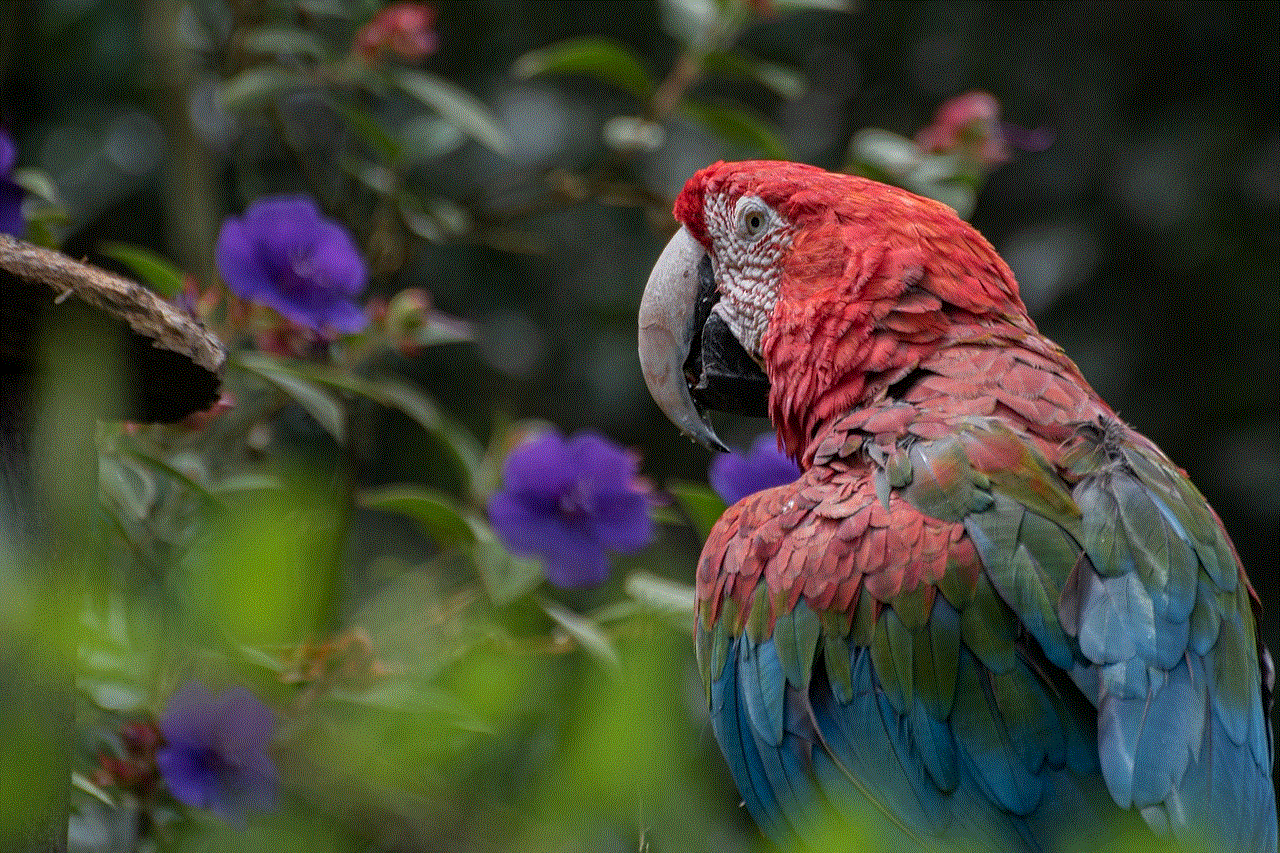how to search privately on iphone
In today’s digital age, privacy has become a major concern for smartphone users, and iPhone users are no exception. With the increasing amount of personal information and data being stored on our devices, it’s important to know how to protect our privacy while using our iPhones. In this article, we will discuss how to search privately on iPhone, and the various methods and tools available to ensure your online activities remain secure.
1. Use Private Browsing Mode
The first and most basic step to searching privately on your iPhone is to use the private browsing mode. This feature is available on all major browsers such as Safari, Chrome, and Firefox , and it allows you to browse the internet without storing any information about your browsing history, cookies, or cache. To activate private browsing on Safari, simply tap on the tab icon at the bottom right corner of your screen, and then select “Private”. For Chrome and Firefox , tap on the three dots at the bottom right corner, and select “New Incognito Tab”.
2. Use a Virtual Private Network (VPN)
A VPN is a powerful tool that helps to protect your online activities from prying eyes. It creates a secure and encrypted connection between your device and the internet, making it almost impossible for anyone to intercept your data. Using a VPN on your iPhone not only ensures your privacy but also allows you to access geo-restricted content and websites. There are many reliable VPN services available, such as NordVPN, ExpressVPN, and Surfshark, which offer easy-to-use apps for iPhone.
3. Disable Location Services
Many apps on your iPhone use your location to provide you with more personalized content and services. However, this also means that your location is being constantly tracked and stored by these apps, which can be a serious privacy concern. To disable location services, go to Settings > Privacy > Location Services, and toggle off the button. You can also choose to allow location access only for specific apps.
4. Clear Cookies and Website Data
Cookies are small text files that websites store on your device to remember your preferences and browsing history. While they can be useful, they also pose a risk to your privacy as they track your online activities. It’s a good practice to regularly clear cookies and website data on your iPhone. To do this, go to Settings > Safari > Clear History and Website Data.
5. Use a Private Search Engine
Google and other popular search engines track your search history and use it to personalize your search results and show you targeted ads. If you want to search privately on your iPhone, consider using a private search engine like DuckDuckGo. Unlike other search engines, DuckDuckGo does not track your search history or store your personal information, making it a great option for privacy-conscious users.
6. Turn off Siri Suggestions
Siri Suggestions is a feature on your iPhone that suggests apps and content based on your usage pattern. While it can be convenient, it also means that your data is being analyzed and stored by Apple. To turn off Siri Suggestions, go to Settings > Siri & Search > Siri Suggestions, and toggle off the button.
7. Use a Password Manager
Using strong and unique passwords for all your online accounts is crucial for your privacy and security. However, remembering multiple complex passwords can be a daunting task. This is where a password manager comes in handy. It securely stores all your passwords and autofills them when needed, making it easier for you to use strong and unique passwords for all your accounts.
8. Disable Automatic App Updates
By default, iPhone automatically updates your apps to the latest versions. While this can be convenient, it also means that your apps are constantly accessing the internet and potentially sharing your data. To disable automatic app updates, go to Settings > iTunes & App Store, and toggle off the button next to “App Updates”.
9. Use Two-Factor Authentication
Two-factor authentication adds an extra layer of security to your online accounts by requiring you to enter a unique code sent to your device before logging in. This ensures that even if someone manages to get hold of your password, they won’t be able to access your account without the code. Many popular apps and websites, such as Facebook, Instagram, and Gmail, offer two-factor authentication, and it’s highly recommended to enable it for all your accounts.
10. Be Mindful of Public Wi-Fi
Using public Wi-Fi networks can put your privacy at risk as they are often unsecured and can be easily intercepted by hackers. Avoid using public Wi-Fi to access sensitive information such as banking or email accounts. If you must use it, consider using a VPN to encrypt your connection.
In conclusion, with the increasing amount of personal information and data being stored on our devices, it’s crucial to know how to search privately on iPhone. By following the tips mentioned in this article, you can ensure your online activities remain secure and your sensitive information is protected from prying eyes. Remember, your privacy is in your hands, so take the necessary steps to safeguard it.
emo girl from mean girls



“Mean Girls” is a cult classic movie that continues to resonate with audiences even after its release in 2004. The movie has given us iconic one-liners, unforgettable characters, and a glimpse into the world of high school cliques. One of the most memorable characters from the movie is an “emo girl” named Janis Ian. Her unique style and attitude have captured the hearts of many fans, making her a beloved character in the movie.
Janis Ian, played by Lizzy Caplan, is a rebellious and non-conformist teenager who is unafraid to speak her mind. She is introduced in the movie as a social outcast, but she later becomes a part of the popular group, “The Plastics,” in an attempt to take them down from the inside. Janis’ character is a reflection of the emo subculture, which was popularized in the early 2000s. In this article, we will dive deeper into the world of the “emo girl” from “Mean Girls” and explore its significance in the movie and beyond.
The term “emo” is short for “emotional” and is a subculture that emerged in the late 1990s and early 2000s. It is a style of rock music that is characterized by its emotional and confessional lyrics. Emo music gained popularity in the early 2000s, and it quickly became a lifestyle for many teenagers. The emo subculture is known for its unique fashion sense, which includes dark and dramatic clothing, heavy makeup, and dyed hair. Emo girls, in particular, were known for their bold and edgy style, which often included band t-shirts, studded belts, and Converse shoes.
Janis Ian’s character in “Mean Girls” perfectly embodies the emo subculture. Her appearance is a stark contrast to the other characters in the movie, who are all shown to follow the mainstream fashion trends. Janis’ dark and edgy style stands out in the sea of pink and pastel colors that the Plastics are known for. She is often seen wearing black clothing, heavy eyeliner, and her signature pink and black streaked hair. Her style not only reflects her personality but also serves as a way to rebel against the norms of high school fashion.
Apart from her appearance, Janis’ attitude is also reflective of the emo subculture. She is outspoken, sarcastic, and unapologetically herself. In the movie, she is shown to be a loner who is not afraid to stand up against the popular crowd. Her character is a breath of fresh air in a world of superficiality and conformity. Janis’ attitude serves as a reminder to the audience that it’s okay to be different and not conform to societal standards.
Janis’ character in “Mean Girls” has become a symbol of empowerment for many teenagers. The movie came out during a time when the concept of “fitting in” was prevalent in high schools. Janis, with her rebellious nature and unique style, was a representation of the outsiders who didn’t fit in with the popular crowd. Her character resonated with many teenagers who felt like they didn’t belong, and she became a role model for those who wanted to embrace their individuality.
One of the most iconic scenes in the movie is when Janis and her friend Damian give Cady Heron, the new girl, a tour of the high school. They introduce her to the different cliques in the school, and when they come across the Plastics, Janis scoffs and says, “That’s Karen Smith. She is one of the dumbest girls you will ever meet.” This scene not only showcases Janis’ sharp wit but also her disdain for the popular crowd. She represents the voice of reason and serves as a reminder that popularity does not equate to intelligence or worth.
Janis’ character development in the movie is also worth mentioning. At the beginning of the movie, she is shown to be a loner who is content with her outsider status. However, when she decides to take down the Plastics, she becomes a part of their group. Janis’ transformation from an outsider to an insider is a commentary on the idea of “fitting in.” Her character arc serves as a reminder that sometimes, in order to bring about change, one must become a part of the system.
Moreover, Janis’ character also breaks the stereotype of the “emo girl” being angsty and moody. In the movie, she is shown to have a fun and playful side, which is evident in her friendship with Damian. Her character is multi-dimensional, and she is not defined by her subculture. She is a complex and relatable character, which makes her even more endearing to the audience.
Janis Ian’s character also highlights the issue of bullying in high schools. In the movie, Janis is constantly bullied by the Plastics, who spread rumors about her and make fun of her appearance. Her character sheds light on the impact of bullying on teenagers and the damaging effects it can have on one’s self-esteem. Through Janis’ character, the movie sends a powerful message about the importance of standing up against bullies and not letting them define you.
In addition to her character in the movie, Janis’ fashion sense has also made a lasting impact. The emo style has become a fashion statement, and many teenagers continue to embrace it even today. The combination of dark and edgy clothing with a touch of pink has become a signature look for many girls. Janis’ character in “Mean Girls” has become a source of inspiration for many teenagers who want to express themselves through their fashion choices.



Furthermore, the emo subculture has also contributed to the music industry. Emo bands like My Chemical Romance, Fall Out Boy, and Panic! At The Disco gained immense popularity in the early 2000s, and their music is still loved by many today. The emo subculture has given a platform to artists to express their emotions through music, and it continues to be a significant part of the music industry.
In conclusion, the “emo girl” from “Mean Girls” has become a beloved character, not just in the movie but also in popular culture. Her unique style, rebellious attitude, and relatable personality have made her a role model for many teenagers. Through Janis’ character, the movie explores the themes of individuality, standing up against bullies, and breaking stereotypes. The emo subculture, which was popularized in the early 2000s, continues to have an impact on fashion and music. Janis Ian will always be remembered as an iconic character who taught us to embrace our uniqueness and not conform to societal norms. As she famously said in the movie, “You gotta stop calling each other sluts and whores. It just makes it okay for guys to call you sluts and whores.” Janis Ian will forever be a symbol of empowerment, individuality, and standing up against the status quo.
emo black kid
“Emo black kid” – the phrase may seem like an oxymoron to some, but to others, it represents a unique and often misunderstood subculture. The term “emo” is derived from the word “emotional” and is often associated with a specific style of music, fashion, and attitude. On the other hand, being black carries its own set of societal expectations and stereotypes. So what happens when these two identities intersect? In this article, we will delve into the world of the emo black kid and explore the complexities and nuances of this often overlooked community.
To understand the emo black kid, we must first understand the origins of emo culture. This subculture emerged in the mid-1980s as a reaction to the hardcore punk scene. Emo music is characterized by its raw and emotional lyrics, often dealing with themes of heartbreak, loneliness, and self-reflection. Bands like Rites of Spring, Sunny Day Real Estate, and Jimmy Eat World were at the forefront of this genre. The music was not only a form of self-expression but also a way for individuals to connect with others who shared similar struggles and emotions.
As the emo scene grew in popularity, so did its fashion. Emo fashion is often associated with dark colors, tight-fitting clothes, and unique hairstyles. Black skinny jeans, band t-shirts, and Converse sneakers were staples in the emo wardrobe. However, what sets emo fashion apart is the incorporation of emotional expression. Band lyrics and symbols were often displayed on clothing, and accessories like studded belts and wristbands were used as a form of self-expression.
Enter the emo black kid. While the emo subculture has always been diverse, it is often associated with white individuals. This is due to the lack of representation of black individuals in the media and music industry. As a result, the emo black kid often faces a double marginalization – not only do they stand out in the predominantly white emo community, but they also do not fit into society’s expectations of what a black person should be.
This lack of representation and understanding often leads to the emo black kid being misunderstood and even ostracized within both the emo and black communities. They are often seen as “not black enough” or “not emo enough,” leading to a constant struggle to find acceptance and belonging. This can be isolating and can lead to feelings of internal conflict and confusion about one’s identity.
However, the emo black kid’s struggle is not just about fitting into a specific subculture or racial identity. It is also a struggle with mental health. Emo culture often deals with heavy emotions and themes of depression and anxiety. As black individuals, the emo black kid may also face additional challenges with mental health due to societal pressures and systemic racism. This intersectionality can be a heavy burden to carry and can contribute to the emo black kid’s feelings of isolation and alienation.
Despite these challenges, the emo black kid continues to carve out their own space in the subculture. They have their own distinct style, often incorporating elements of both emo and black culture. This can include wearing band t-shirts with references to black artists, incorporating traditional African prints into their outfits, or even adding a touch of streetwear to their emo aesthetic. It is a unique fusion of cultures that is not seen in any other subculture.
Moreover, the emo black kid is not just confined to music and fashion. They are also carving out their own space in the digital world. Social media has allowed for the creation of online communities where individuals can connect with others who share similar interests and struggles. The emo black kid can find solace and acceptance in these online spaces, creating a sense of belonging that may not be found in their physical environment.
In recent years, there has been a growing movement within the emo community to embrace diversity and inclusivity. This has led to more representation of black artists and musicians in the emo scene. Bands like Death Grips, Ho99o9, and Injury Reserve are challenging the traditional expectations of what it means to be emo and are bringing a fresh perspective to the genre.
In addition, there has been a rise in the popularity of black emo influencers and content creators on social media platforms like TikTok and Instagram. These individuals are using their platforms to not only showcase their unique fashion and music taste but also to educate and bring awareness to the struggles faced by the emo black kid. This representation is crucial in breaking down stereotypes and promoting acceptance and understanding within the community.



Despite the progress made, the emo black kid still faces challenges and obstacles. They continue to navigate a world that may not fully understand or accept them. However, their resilience and determination to carve out their own space in the subculture are admirable. The emo black kid is a testament to the power of self-expression and the importance of embracing diversity.
In conclusion, the emo black kid is a unique and complex identity that challenges societal norms and expectations. Through their fashion, music, and online presence, they are creating a space for themselves in a world that may not always understand them. They are a reminder that identity is not limited to one label or stereotype and that true self-expression knows no boundaries. The emo black kid is a testament to the power of embracing one’s true self, no matter how unconventional it may be.